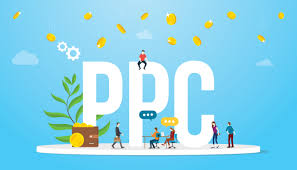Pay-per-click (PPC) advertising has become an essential component of digital marketing. PPC is a form of online advertising where advertisers pay each time a user clicks on one of their ads. These ads can appear on search engine results pages, social media platforms, and other websites.
PPC advertising allows businesses to target specific audiences based on demographics, interests, and behaviors. This targeting ensures that the ads are shown to people who are most likely to be interested in the product or service being advertised. This targeted approach leads to higher conversion rates and a better return on investment (ROI).
One of the biggest advantages of PPC advertising is its flexibility. Advertisers can set their own budgets and adjust their bids based on the performance of their ads. They can also pause or stop campaigns at any time, making it easy to change course if necessary.
Another advantage of PPC advertising is its ability to provide real-time data and insights. Advertisers can track the performance of their campaigns in real-time and make adjustments as needed. This allows for continuous optimization, resulting in better performance over time.
There are several different types of PPC ads, including search ads, display ads, shopping ads, and video ads. Search ads appear at the top or bottom of search engine results pages when users search for specific keywords or phrases. Display ads appear on websites that are part of Google’s network and can include text, images, or video. Shopping ads allow businesses to promote their products directly within Google search results pages. Video ads appear before or during videos on YouTube and other video-sharing platforms.
While PPC advertising offers many benefits, it’s important to note that it requires careful planning and execution to be effective. Advertisers must choose the right keywords, create compelling ad copy and landing pages, set appropriate bids, and continuously monitor performance.
In conclusion, PPC advertising is a powerful tool for businesses looking to reach targeted audiences online. Its flexibility and real-time data make it an essential component of any digital marketing strategy. By carefully planning and executing their campaigns, businesses can achieve higher conversion rates and a better ROI.
8 Essential Tips for PPC Success in Digital Marketing
- Research your target audience
- Set realistic goals
- Choose the right keywords
- Craft compelling ad copy
- Monitor performance regularly
- Utilize A/B testing
- Optimize bids & budgets accordingly
- Leverage remarketing & retargeting
Research your target audience
When it comes to pay-per-click (PPC) advertising in digital marketing, one of the most important tips to keep in mind is to research your target audience. This means understanding who your ideal customer is and what they’re looking for.
By researching your target audience, you can create highly targeted ads that speak directly to their needs and interests. This leads to higher click-through rates and better conversion rates.
To research your target audience, start by creating buyer personas. These are fictional representations of your ideal customers based on demographic data, interests, and behaviors. Use tools like Google Analytics and social media analytics to gather data on your existing customers and website visitors.
Once you have a good understanding of your target audience, use that information to create ad copy that speaks directly to their needs and interests. Use language that resonates with them and highlight the benefits of your product or service.
It’s also important to choose the right keywords for your PPC ads. Use long-tail keywords that are specific to your product or service and that align with the search terms your target audience is using.
In conclusion, researching your target audience is essential for creating effective PPC ads in digital marketing. By understanding who you’re trying to reach and what they’re looking for, you can create highly targeted ads that lead to better results. So take the time to do the research and create ads that speak directly to your ideal customers.
Set realistic goals
Setting realistic goals is a crucial tip for businesses engaging in pay-per-click (PPC) advertising as part of their digital marketing strategy. PPC campaigns can be expensive, and setting unrealistic goals can lead to wasted resources and disappointment.
Before launching a PPC campaign, businesses should define clear and measurable goals. These goals should be specific, attainable, and relevant to the overall business objectives. For example, a business may set a goal of increasing website traffic by 20% or generating 50 new leads per month.
Setting realistic goals requires an understanding of the target audience and the industry landscape. Businesses should research their competitors’ PPC campaigns to gain insights into what works and what doesn’t. They should also analyze their website’s current performance to identify areas for improvement.
Once the goals are set, businesses must track their progress regularly. This allows them to make adjustments as needed and ensure that they are on track to achieve their objectives. They can use various tools like Google Analytics or PPC management software to monitor the campaign’s performance.
In conclusion, setting realistic goals is an essential tip for successful PPC campaigns in digital marketing. It helps businesses avoid wasting resources while achieving meaningful results that align with overall business objectives. By defining clear and measurable goals, tracking progress regularly, and making adjustments as necessary, businesses can optimize their PPC campaigns for maximum impact.
Choose the right keywords
Choosing the right keywords is one of the most important tips for successful PPC advertising in digital marketing. Keywords are the words or phrases that users type into search engines when they are looking for something. By selecting the right keywords, businesses can ensure that their ads appear to users who are interested in their products or services.
To choose the right keywords, businesses should start by researching their target audience and understanding what they are searching for. They can use keyword research tools to identify popular search terms and phrases related to their business. It’s important to choose keywords that are relevant to the business and have a high search volume.
Once businesses have identified their target keywords, they should organize them into ad groups based on relevance. This allows them to create targeted ads that match the user’s search query and increase the likelihood of a click-through.
It’s also important to consider negative keywords, which are words or phrases that should be excluded from an ad campaign. For example, if a business sells luxury watches, they may want to exclude searches for “cheap watches” or “discount watches” as these users may not be interested in their high-end products.
Choosing the right keywords requires ongoing monitoring and optimization. Businesses should regularly review their campaigns and adjust their keyword strategy based on performance data. This ensures that they are targeting the most effective keywords and maximizing their ROI.
In conclusion, choosing the right keywords is essential for successful PPC advertising in digital marketing. By conducting thorough research, organizing keywords into relevant ad groups, considering negative keywords, and regularly monitoring performance data, businesses can create effective campaigns that reach their target audience and drive conversions.
Craft compelling ad copy
Crafting compelling ad copy is one of the most important factors in creating a successful PPC advertising campaign. Ad copy is the text that appears in your ad and it’s what will entice users to click on your ad and visit your website.
When crafting ad copy, it’s important to keep in mind the user’s intent. What are they searching for? What problem are they trying to solve? Your ad copy should speak directly to their needs and offer a solution.
Include relevant keywords in your ad copy, as this will help your ads appear when users search for those keywords. Highlight the benefits of your product or service, and use action-oriented language to encourage users to take action.
Make sure your ad copy is clear and concise, as users typically only have a few seconds to read an ad before deciding whether or not to click on it. Use strong headlines and eye-catching visuals to grab their attention.
Finally, make sure that your ad copy aligns with the landing page that users will be directed to after clicking on your ad. The landing page should offer a seamless transition from the ad, with consistent messaging and a clear call-to-action.
In conclusion, crafting compelling ad copy is crucial for creating a successful PPC advertising campaign. By focusing on user intent, using relevant keywords, highlighting benefits, being clear and concise, using strong headlines and visuals, and aligning with landing pages, businesses can create ads that resonate with their target audience and drive conversions.
Monitor performance regularly
One of the most critical tips for successful PPC advertising in digital marketing is to monitor performance regularly. PPC advertising is a dynamic and ever-changing landscape, and it’s essential to keep track of your campaigns’ performance to ensure their success.
Monitoring your campaigns regularly allows you to identify any issues or areas for improvement quickly. By analyzing your data, you can identify which keywords, ad copy, or landing pages are performing well and which ones need optimization. You can then adjust your bids, targeting, or ad copy accordingly to improve performance.
Regular monitoring also allows you to stay on top of trends and changes in the market. For example, if a new competitor enters the market or a product becomes more popular, you may need to adjust your strategy accordingly.
Furthermore, monitoring performance regularly ensures that you stay within budget and avoid overspending on campaigns that are not performing well. By identifying underperforming campaigns early on, you can reallocate your budget to more successful campaigns and maximize your ROI.
In conclusion, monitoring performance regularly is crucial for successful PPC advertising in digital marketing. It allows you to identify issues quickly, optimize your campaigns for better results, stay on top of trends and changes in the market, and maximize your ROI by staying within budget. By making regular monitoring a part of your strategy, you can achieve long-term success with PPC advertising.
Utilize A/B testing
When it comes to PPC advertising in digital marketing, it’s essential to continuously improve your campaigns’ performance. One way to do this is by utilizing A/B testing. A/B testing involves creating two versions of an ad and testing them against each other to see which one performs better.
To get started with A/B testing, you should first identify the element you want to test. This could be the ad headline, copy, imagery, or even the landing page. Once you’ve identified what you want to test, create two versions of the ad that differ only in that element.
Next, run both ads simultaneously and track their performance metrics such as click-through rates (CTRs), conversion rates, and cost per click (CPC). After a predetermined period, analyze the data and determine which version of the ad performed better. Use this information to optimize your future campaigns.
A/B testing allows you to make data-driven decisions about your PPC campaigns. By continually refining your ads based on performance data, you can achieve higher conversion rates and a better ROI over time.
In conclusion, A/B testing is a simple yet powerful tool for improving the effectiveness of your PPC advertising campaigns in digital marketing. By testing different elements of your ads and using data to make informed decisions, you can continuously optimize your campaigns for better results.
Optimize bids & budgets accordingly
Optimizing bids and budgets is a crucial aspect of pay-per-click (PPC) advertising in digital marketing. By adjusting your bids and budgets, you can ensure that your ads are being shown to the right audience at the right time, resulting in better performance and a higher return on investment (ROI).
One way to optimize bids is to use automated bidding strategies. These strategies use machine learning algorithms to adjust bids based on factors such as device type, time of day, and user location. Automated bidding can save time while also improving ad performance by ensuring that bids are optimized for each individual auction.
Another way to optimize bids is to use bid modifiers. Bid modifiers allow you to adjust your bids based on specific criteria such as device type, location, or time of day. By adjusting your bids in this way, you can ensure that your ads are being shown to the most relevant audience.
Optimizing budgets is also important for PPC advertising success. By setting appropriate budgets for each campaign and adjusting them based on performance, you can ensure that your ad spend is being used effectively.
One way to optimize budgets is to use ad scheduling. Ad scheduling allows you to choose specific times of day or days of the week when your ads will be shown. This helps ensure that your budget is being used effectively by showing ads during times when they’re most likely to be seen by potential customers.
In conclusion, optimizing bids and budgets is a critical component of PPC advertising in digital marketing. By using automated bidding strategies, bid modifiers, ad scheduling, and other optimization techniques, businesses can achieve better ad performance and a higher ROI.
Leverage remarketing & retargeting
If you’re running a pay-per-click (PPC) advertising campaign, leveraging remarketing and retargeting can be a game-changer. Remarketing and retargeting are techniques that allow you to show ads to people who have already interacted with your website or brand in some way.
Remarketing involves showing ads to people who have previously visited your website or engaged with your brand. For example, if someone visited your website but didn’t make a purchase, you can use remarketing to show them ads for the product they were interested in. This keeps your brand top of mind and encourages the user to return and complete their purchase.
Retargeting goes a step further by showing ads to people who have interacted with your brand in other ways, such as through social media or email marketing. For example, if someone clicked on a link in one of your emails but didn’t make a purchase, you can use retargeting to show them an ad for the same product they were interested in.
The benefits of using remarketing and retargeting are clear. These techniques allow you to target users who are already familiar with your brand and have shown an interest in what you offer. This makes it more likely that they will convert into customers.
To leverage remarketing and retargeting effectively, it’s important to segment your audience based on their behavior. For example, you can create different ad campaigns for users who abandoned their cart versus those who only viewed a product page. By tailoring your ads to specific user actions, you can increase the likelihood of conversion.
In conclusion, leveraging remarketing and retargeting is an effective way to boost the performance of your PPC advertising campaigns. By targeting users who are already familiar with your brand and have shown an interest in what you offer, you can increase conversions and improve ROI. Remember to segment your audience based on behavior for maximum effectiveness.




